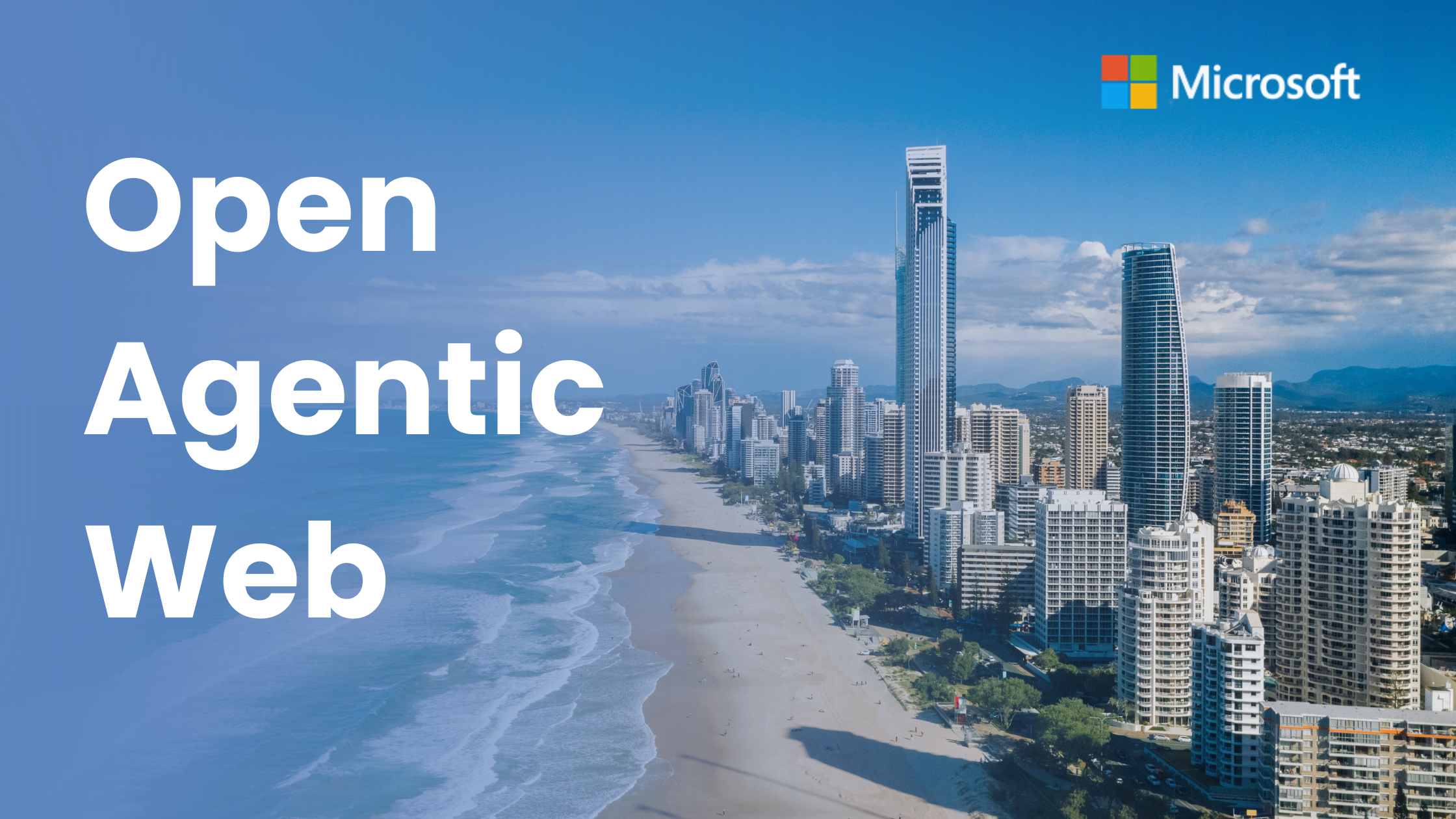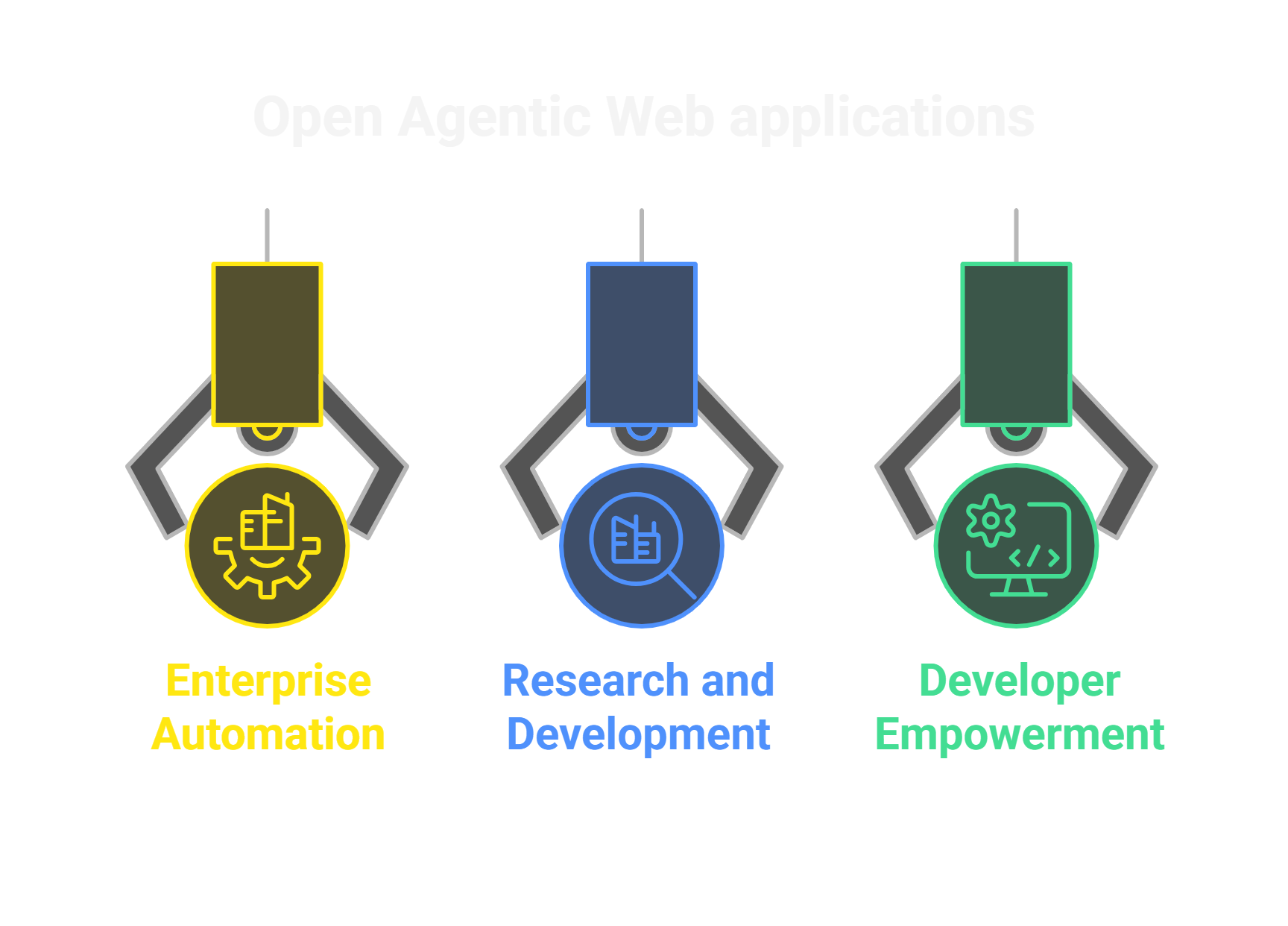The Open Agentic Web -Microsoft’s Vision for a Collaborative AI Future
Empowers AI agents to collaborate and automate across platforms with intelligence and autonomy.

Introduction
Artificial Intelligence (AI) is evolving rapidly, transforming the way we work, collaborate, and innovate. At the forefront of this revolution is Microsoft, championing a new era of interconnected AI systems through the concept of the Open Agentic Web. This vision promises a future where autonomous AI agents not only operate in isolation but also collaborate seamlessly across platforms, organizations, and industries, unlocking unprecedented possibilities.
Microsoft’s leadership in this space is more than just technological innovation; it’s about fostering a vibrant ecosystem where AI is open, collaborative, and accessible. For more insights into how AI is shaping the future
Defining the Open Agentic Web
The Open Agentic Web represents the next evolution in AI — a shift from traditional, static AI models toward autonomous, collaborative agents that act and interact dynamically. These agents aren’t just tools responding to commands; they are intelligent participants capable of communicating, negotiating, and working together to achieve complex objectives.
This transition marks a move away from siloed AI toward a web of interconnected agents. In this ecosystem, AI models can leverage shared data, context, and capabilities, creating a fluid, adaptive, and open environment — much like the web of humans and organizations that thrive on collaboration and knowledge sharing.

Microsoft's Strategic Initiatives
Microsoft is pioneering this vision through several key initiatives:
- Agent Factory: This platform empowers developers to build sophisticated AI agents using powerful tools like GitHub Copilot and Azure’s cloud infrastructure. Agent Factory provides an accessible and scalable environment for creating AI agents capable of sophisticated autonomous behavior.
- Model Context Protocol (MCP): MCP is an open standard designed to enable seamless communication between AI agents and various data sources. By standardizing how agents access and exchange contextual information, MCP ensures interoperability and real-time responsiveness.

- Agent-to-Agent (A2A) Protocol: Collaboration between AI agents across platforms and services is critical. The A2A protocol facilitates this cross-agent communication, enabling agents from different environments to coordinate tasks, share insights, and collectively solve problems.
These initiatives form the backbone of Microsoft’s commitment to an open, interoperable AI ecosystem that thrives on collaboration.

Integration Across Cloud Platforms
Recognizing the diversity of cloud infrastructures in enterprises, Microsoft is driving integration efforts to ensure AI agents built on the Open Agentic Web can operate across all major cloud providers — including AWS, Azure, Google Cloud Platform (GCP), and SAP.
This cloud-agnostic approach guarantees that organizations can leverage AI agents regardless of their existing infrastructure, making AI-driven collaboration more accessible and scalable across industries and borders.
Real-World Applications and Use Cases
The Open Agentic Web is not just a theoretical concept — it’s already impacting how businesses and researchers innovate:
- Enterprise Automation: AI agents automate routine and complex business processes, improving efficiency and freeing human teams to focus on strategic work.
- Research and Development: Platforms like Microsoft Discovery leverage AI agents to accelerate scientific breakthroughs, enabling rapid data analysis, hypothesis generation, and collaboration across research teams worldwide.
- Developer Empowerment: Tools such as Windows AI Foundry and Azure AI Foundry provide developers with user-friendly environments to build, test, and deploy AI agents quickly, democratizing AI development.

Benefits of the Open Agentic Web
Microsoft’s vision brings numerous advantages:
- Enhanced Collaboration: Teams and organizations can coordinate efforts seamlessly through interoperable AI agents, boosting productivity and innovation.
- Scalability and Flexibility: Open standards allow AI agents to handle increasingly complex tasks by leveraging distributed resources and diverse data sources.
- Accelerated Innovation: Shared protocols foster a community-driven approach to AI development, encouraging experimentation and rapid iteration.
Challenges and Considerations
Despite its promise, the Open Agentic Web raises important challenges:
- Data Security and Privacy: Open AI ecosystems must prioritize robust safeguards to protect sensitive data and comply with regulatory standards.
- Universal Standards: Establishing and maintaining interoperability standards requires ongoing collaboration across organizations and industries.
- Ethical Deployment: Autonomous AI agents raise ethical questions around accountability, transparency, and potential biases that must be addressed proactively.
Getting Started: Your Path to the Agentic Future
Organizations looking to capitalize on the Open Agentic Web should consider a strategic approach to adoption:
Phase 1: Foundation Building
Begin by establishing the necessary infrastructure and skills:
- Azure Subscription Setup: Configure enterprise-grade Azure environments with appropriate security controls
- Team Training: Invest in training for developers and IT professionals on AI agent development
- Use Case Identification: Identify high-value scenarios where AI agents can provide immediate benefits
- Pilot Projects: Start with small-scale implementations to build experience and demonstrate value
Phase 2: Agent Development
Leverage Azure's tools to build and deploy your first AI agents:
- Azure AI Foundry: Use the platform to develop custom agents tailored to your business needs
- MCP Integration: Ensure your agents can interoperate with other systems and platforms
- Testing and Validation: Implement comprehensive testing frameworks to ensure agent reliability
- Performance Monitoring: Deploy monitoring solutions to track agent performance and optimization opportunities
Phase 3: Scale and Optimize
Expand your agent ecosystem across the organization:
- Cross-Platform Integration: Connect agents with existing enterprise systems and workflows
- Advanced Capabilities: Implement more sophisticated agent behaviors and reasoning capabilities
- Ecosystem Expansion: Integrate with third-party services and platforms through open standards
- Continuous Improvement: Establish feedback loops to continuously enhance agent performance
- Security and Governance: Enforce robust security measures, ensure regulatory compliance, maintain audit trails, and implement ethical governance frameworks to support safe and scalable AI agent deployment.
The Future is Now
The Open Agentic Web represents more than just a technological advancement—it's a fundamental shift in how we conceive of digital interaction and automation. Under this vision, every user gets their own personal digital workforce, each developer can create smart assistants, and businesses can achieve efficiency like never before.
Organizations that embrace this vision today will find themselves at a significant competitive advantage. By leveraging Azure's comprehensive AI agent development and deployment capabilities, businesses can create intelligent systems that not only automate routine tasks but also provide strategic insights and enable new forms of customer engagement.
The transformation has already begun. The question isn't whether AI agents will reshape business operations—it's whether your organization will lead this transformation or follow in its wake. With Microsoft's Open Agentic Web vision and Azure's powerful infrastructure, the tools for success are available today.

FAQ'S
1. How will the Open Agentic Web reshape enterprise workflows?
It enables AI agents to handle multi-step, cross-platform tasks autonomously—like processing claims, coordinating logistics, or triggering DevOps pipelines—without human handoffs. This minimizes latency, reduces silos, and fosters real-time, AI-to-AI collaboration between systems like Salesforce, SAP, and Azure-native apps.
2. What distinguishes Microsoft’s agentic approach from traditional automation?
Unlike RPA or scripted bots, Microsoft’s agentic AI adapts in real time using contextual understanding, reasoning, and autonomous planning. It doesn’t follow rigid rules—it learns intent, navigates ambiguity, and interacts with APIs or users proactively, making decisions based on live enterprise data.
3. How does Microsoft plan to prevent agentic AI sprawl?
Through centralized orchestration using tools like Azure AI Studio, Semantic Kernel, and governance layers in Microsoft Copilot. These ensure agents are discoverable, auditable, policy-aligned, and reusable—reducing shadow IT risks while enabling safe enterprise-wide deployment of autonomous agents.
4. What are early enterprise use cases Microsoft is enabling?
Use cases include autonomous document processing, dynamic knowledge retrieval from enterprise data lakes, multi-agent task delegation in customer support, and AI-led incident triaging in DevOps pipelines. These are being piloted across finance, manufacturing, and healthcare with Microsoft partners and cloud-native integrations.
5. How can developers start building agentic systems today?
Developers can begin with Microsoft’s open-source Semantic Kernel, integrate with Azure OpenAI for natural language reasoning, and use Microsoft Copilot stack to link enterprise data. Sample blueprints and orchestration frameworks are available, enabling dev teams to test agent behaviors in real business flows before scaling.

